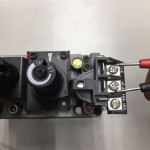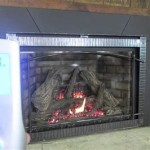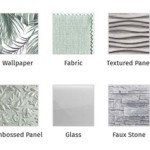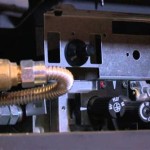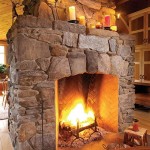Constructing a Homemade Outdoor Fireplace: A Comprehensive Guide
The allure of an outdoor fireplace extends beyond mere warmth; it provides a focal point for social gatherings, enhances the aesthetic appeal of a landscape, and offers a unique avenue for outdoor cooking. While professionally installed fireplaces represent a significant investment, constructing a homemade outdoor fireplace is a viable alternative, offering considerable cost savings and the satisfaction of a hands-on project. This article will outline essential considerations and steps involved in building a safe and functional outdoor fireplace.
Before embarking on construction, meticulous planning and adherence to local regulations are paramount. Neglecting these preliminary steps can result in safety hazards, structural instability, and legal repercussions. Therefore, a thorough understanding of building codes, material selection, and construction techniques is crucial for a successful project.
Regulatory Compliance and Site Selection
The initial step in constructing an outdoor fireplace involves verifying local building codes and obtaining necessary permits. Municipalities often have specific requirements regarding fireplace construction, including setback distances from property lines, chimney height regulations, and permitted materials. Contacting the local building department is essential to ascertain these regulations and ensure compliance throughout the construction process. Failure to obtain necessary permits can result in fines, mandatory demolition, and wasted materials.
Alongside regulatory compliance, careful site selection is critical. The location should be a safe distance from combustible materials, such as trees, fences, and overhanging structures. Consider prevailing wind direction to minimize smoke nuisance for neighboring properties. The site should also be relatively level and capable of supporting the weight of the fireplace structure. Access to the construction site for material delivery is another important factor to consider. A well-drained location will prevent water accumulation around the fireplace base, which can lead to structural damage over time.
Once the site is selected, clearly mark the perimeter of the fireplace foundation. This will serve as a guide during excavation and foundation construction. Accurate measurements are essential to ensure the finished fireplace is properly aligned and aesthetically pleasing.
Foundation Construction and Material Selection
A solid foundation is the cornerstone of any durable outdoor fireplace. The type of foundation required depends on the size and weight of the fireplace structure. For smaller, lighter fireplaces, a reinforced concrete slab may suffice. However, larger, heavier fireplaces typically require a deeper foundation with footings extending below the frost line. The frost line is the maximum depth to which groundwater in soil is expected to freeze. Footings below this line prevent heaving and cracking of the foundation due to freeze-thaw cycles.
Excavate the ground to the required depth for the foundation and footings. Construct forms using lumber to define the shape and dimensions of the concrete pour. Reinforce the concrete with steel rebar to enhance its tensile strength and prevent cracking. Ensure the rebar is properly spaced and tied together according to engineering specifications. Pour the concrete into the forms and level the surface using a screed board. Allow the concrete to cure for at least seven days before proceeding with the construction of the fireplace structure. Curing involves keeping the concrete moist to promote proper hydration and strength development. Regular watering or covering the concrete with plastic sheeting can help maintain moisture levels.
Material selection is another critical aspect of fireplace construction. Common materials include brick, concrete blocks, natural stone, and refractory materials. Brick and stone offer aesthetic appeal and durability but can be more expensive. Concrete blocks are a more economical alternative but may require a decorative veneer to enhance their appearance. Refractory materials, such as firebrick and refractory mortar, are essential for the firebox lining. These materials are designed to withstand high temperatures and prevent heat transfer to the surrounding structure. Using non-refractory materials in the firebox can lead to cracking, spalling, and potential fire hazards.
When choosing mortar, ensure it is specifically formulated for fireplace construction. Type N mortar is generally recommended for outdoor applications as it offers good strength and flexibility. Avoid using ordinary concrete mortar, as it is not designed to withstand the high temperatures and thermal stresses associated with fireplaces.
Firebox Construction and Chimney Design
The firebox is the heart of the fireplace and requires careful construction using refractory materials. Firebrick should be laid in a running bond pattern, ensuring tight joints and proper alignment. Use refractory mortar to bind the firebrick together. The firebox should be sized appropriately based on the desired size of the fire. A firebox that is too small will restrict airflow, while a firebox that is too large will consume excessive amounts of fuel.
The shape of the firebox is also important for efficient combustion. A slightly arched firebox can help radiate heat back towards the fire, improving its efficiency. A smoke shelf should be incorporated into the design to prevent downdrafts and ensure proper smoke flow up the chimney. The smoke shelf is a horizontal surface located just above the firebox opening that deflects downdrafts upward and helps to create a smooth flow of smoke into the chimney.
The chimney is responsible for venting smoke and combustion gases away from the fireplace. Proper chimney design is crucial for safe and efficient fireplace operation. The chimney height should be at least 10 feet above the firebox opening and extend at least two feet above the highest point of the roof within a 10-foot radius. This helps to ensure adequate draft and prevent smoke from being blown back into the fireplace or into neighboring properties.
The chimney flue should be sized appropriately based on the size of the firebox opening. A flue that is too small will restrict airflow and cause smoke to back up into the fireplace. A flue that is too large will reduce the draft and allow the fire to burn inefficiently. Consult a chimney design guide or a qualified professional to determine the appropriate flue size for the specific fireplace design. The chimney should be constructed using durable, fire-resistant materials such as brick, stone, or a pre-fabricated chimney liner. A chimney cap should be installed at the top of the chimney to prevent rain, snow, and debris from entering the flue.
During construction, maintain plumb lines and level surfaces to ensure the fireplace is structurally sound and aesthetically pleasing. Use a spirit level and a plumb bob to check for deviations from vertical and horizontal lines. Consistent monitoring of alignment throughout the construction process is crucial for a professional-looking finished product. Pay attention to detail and ensure all mortar joints are properly filled and finished. Sloppy workmanship can detract from the overall appearance of the fireplace and compromise its structural integrity.
Once the fireplace structure is complete, allow the mortar to cure fully before lighting a fire. The curing time will vary depending on the type of mortar used and the ambient temperature and humidity. Consult the mortar manufacturer's instructions for specific curing recommendations. After the mortar has cured, start with small fires and gradually increase the size of the fire over several days. This will help to temper the firebox lining and prevent cracking due to thermal shock.
Regular maintenance is essential to ensure the longevity and safe operation of the outdoor fireplace. Inspect the fireplace regularly for cracks, loose bricks, or other signs of damage. Repair any damage promptly to prevent further deterioration. Clean the chimney regularly to remove creosote buildup, which is a highly flammable substance that can accumulate in the flue. A professional chimney sweep can be hired to perform this task. Burning only seasoned, dry wood will minimize creosote buildup and ensure efficient combustion.

How We Built Our Outdoor Fireplace Chris Loves Julia

How To Build An Outdoor Fireplace Today S Creative Life

Diy Outdoor Fireplace Kit Fremont Makes Hardscaping And Easy

How Much Does It Cost To Build A Diy Outdoor Fireplace

How We Built Our Outdoor Fireplace Chris Loves Julia

How To Build An Outdoor Fireplace Step By Guide Buildwithroman

Saguaro Diy Outdoor Fireplace Plan Plans Decor Backyard

Build An Outdoor Fireplace The Shed

Diy Outdoor Fireplace Ideas

Pima Diy Outdoor Fireplace Plan
Related Posts



